Saddle hunting has really taken off in recent years, but for newcomers, using one can feel a little overwhelming at first. The gear looks different, the learning curve seems steep, and it’s not nearly as familiar as a tree stand. But once hunters give it a try, most quickly see the advantages and wonder why they didn’t make the switch sooner.
Most hype or gimmick products catch hunters’ attention for a season or two and then fade away. I’ve seen it happen countless times with deer calls or scent products; they’re always marketed as a way to get an edge. But saddle hunting is different. Hunting from a tree saddle has completely changed how I approach the woods, how I hunt, and even where I hunt. It’s made me more versatile and, honestly, more successful.
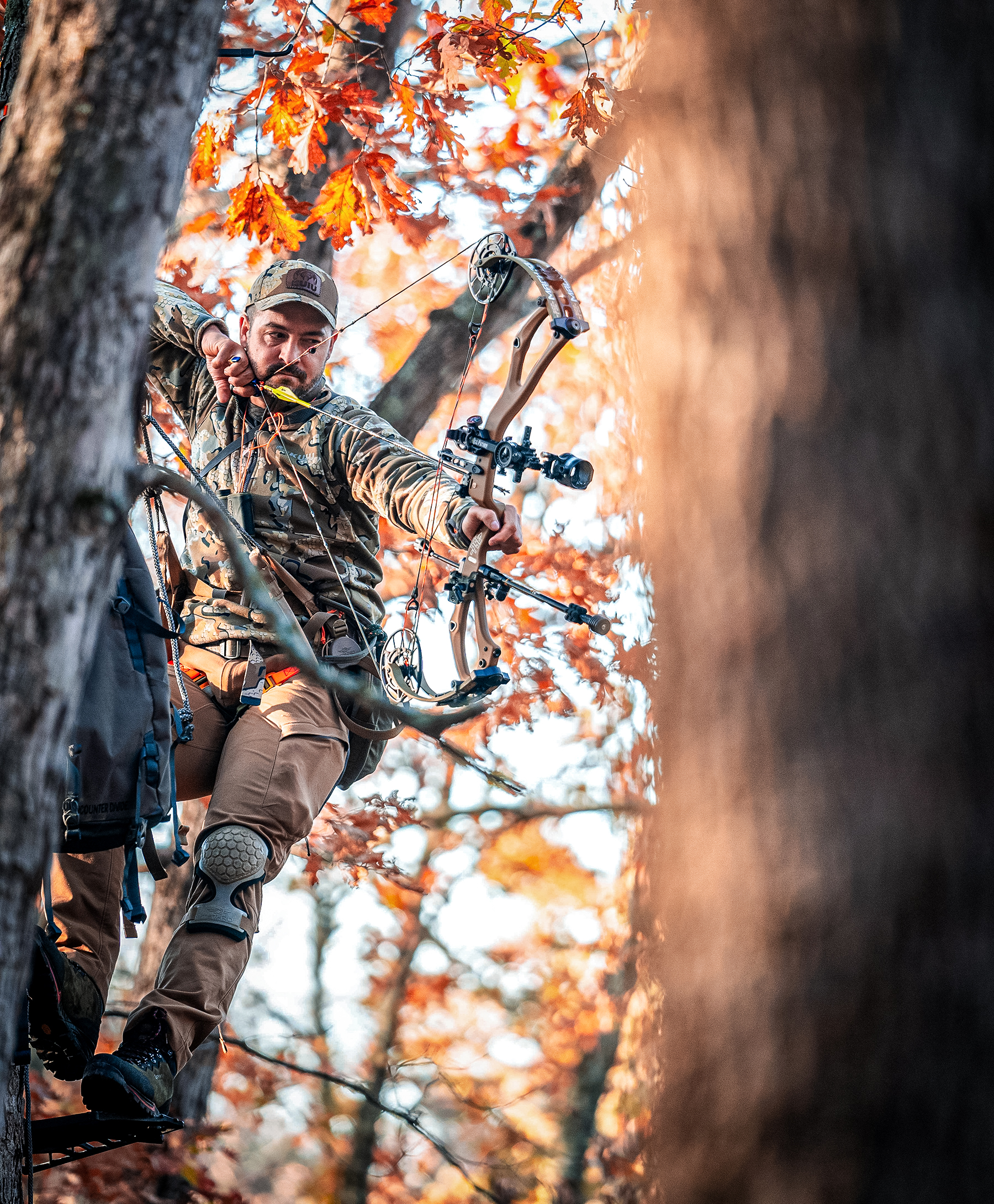
Even after three or four years of saddle hunting, I still get a kick out of talking about past hunts with other hunters. The moment I say, “I was hunting from my saddle,” their eyes light up. I almost always get questions like, “Does that really work?” or “Do you actually like hunting from a saddle?” By the end of the conversation, most of them are saying, “I’ve got to try that.”
Saddle hunting has become incredibly popular, and many hunters believe this hunting technique is not a gimmick or a fad and that it’s here to stay. And hunters are eager to learn more about hunting saddles.
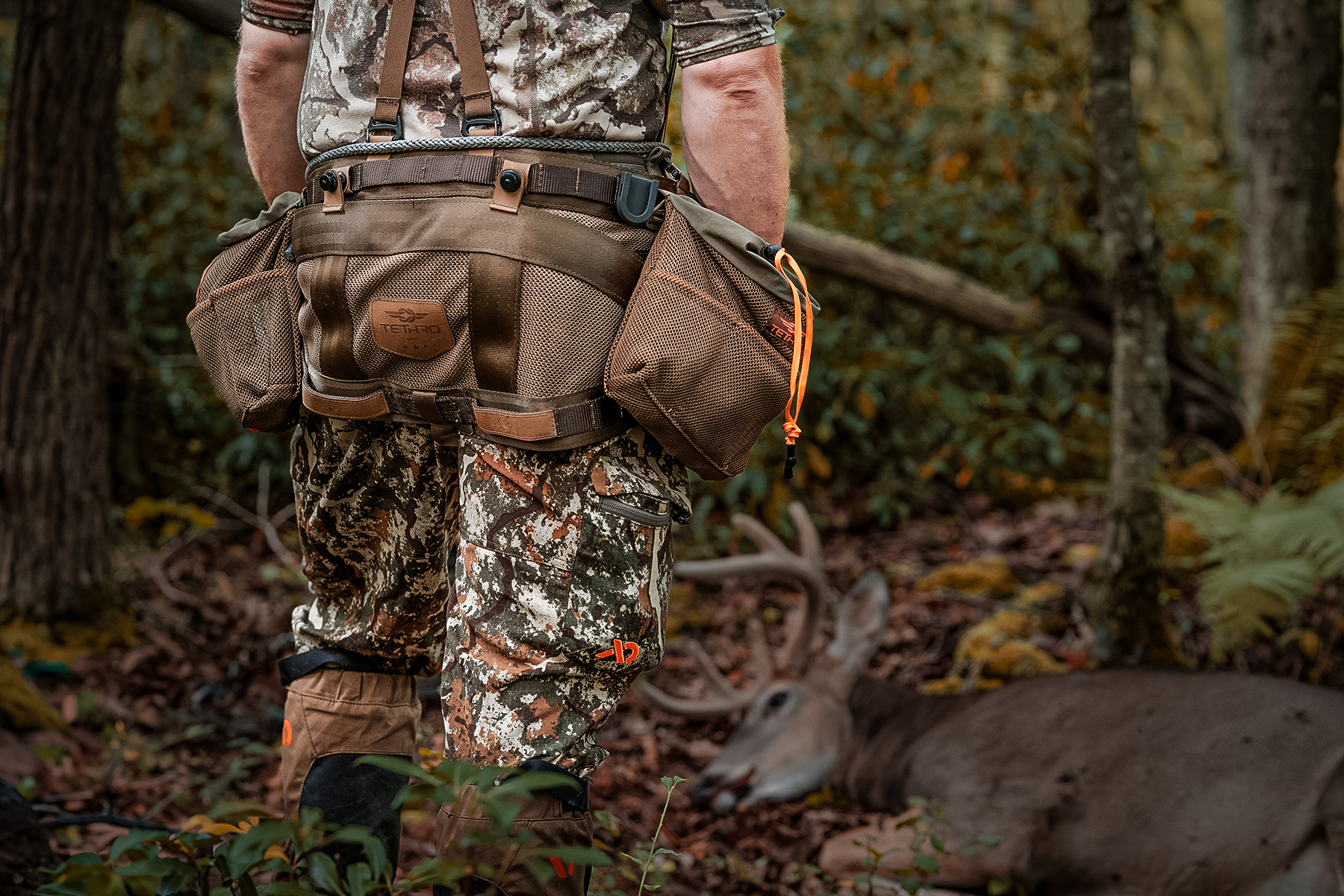
To gain a better perspective, I recently spoke with two saddle hunting enthusiasts, Alex Chopp, one of the founders of Latitude Outdoors, and Robert Mendoza, the senior marketing manager for Tethrd. I talked with them to help explain what saddle hunting really is, why it works, and how a beginner can get started the right way.
Latitude’s story began in Michigan’s swamps with Chopp’s business partner, Kevin, after a tough first hunt using traditional tree-stand gear. Kevin, a former University of Michigan football player and mechanical engineer, knew there had to be a better way. He bought a sewing machine, crafted his own saddle, and that homemade prototype eventually evolved into what is now known as Latitude’s Method saddle system.

Saddle hunting wasn’t new to Chopp. He grew up hunting public land in Michigan’s Upper Peninsula, where staying mobile and adaptable was the only way to find deer consistently.
“My dad was a bowhunter and a mobile hunter,” Chopp said. “That’s how I learned from the very beginning.”
Mendoza’s story is different. He’s newer to the sport, picking up whitetail hunting in 2019 and saddle hunting in 2021. But his learning curve shows just how powerful the saddle can be for newcomers.
“My first year in a saddle, I killed four deer on four different pieces of public land,” he said. “That never would have happened in a preset stand. Saddle hunting gave me the ability to move where the deer were, and that made all the difference.”
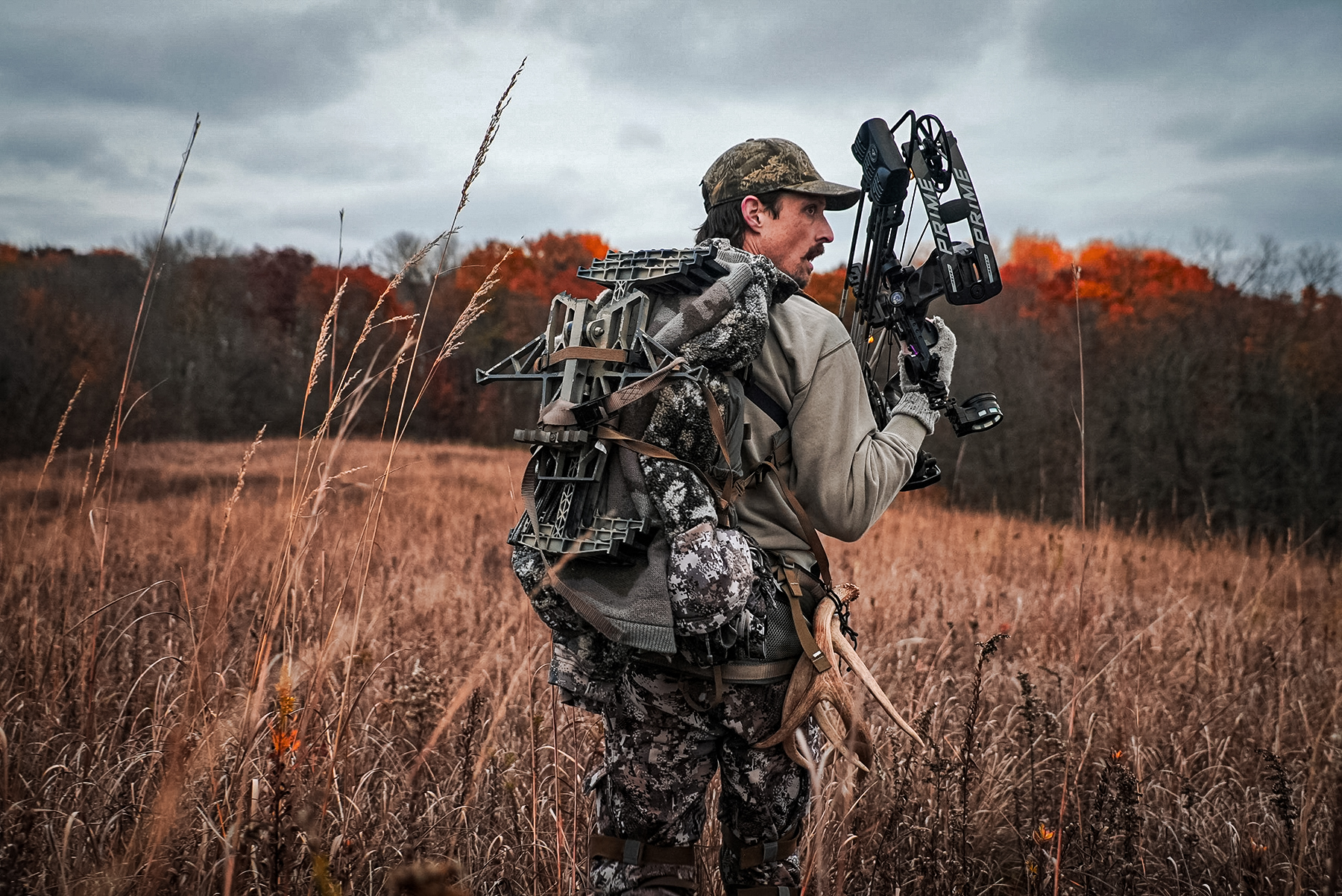
Is Saddle Hunting Just Hype?
With so much buzz, many hunters still ask whether saddle hunting is just a fad. Both Chopp and Mendoza agree that the momentum is real, and it’s here to stay. I began my conversations with both of them by asking if they thought saddle hunting was still the new and exciting thing for deer hunters and the most significant trend in the industry, or if it was becoming a norm.
“I think people are aware of it now, but a lot haven’t taken the step yet because it looks confusing,” Alex said. “Once you get hands-on, you realize it’s not complicated at all.”
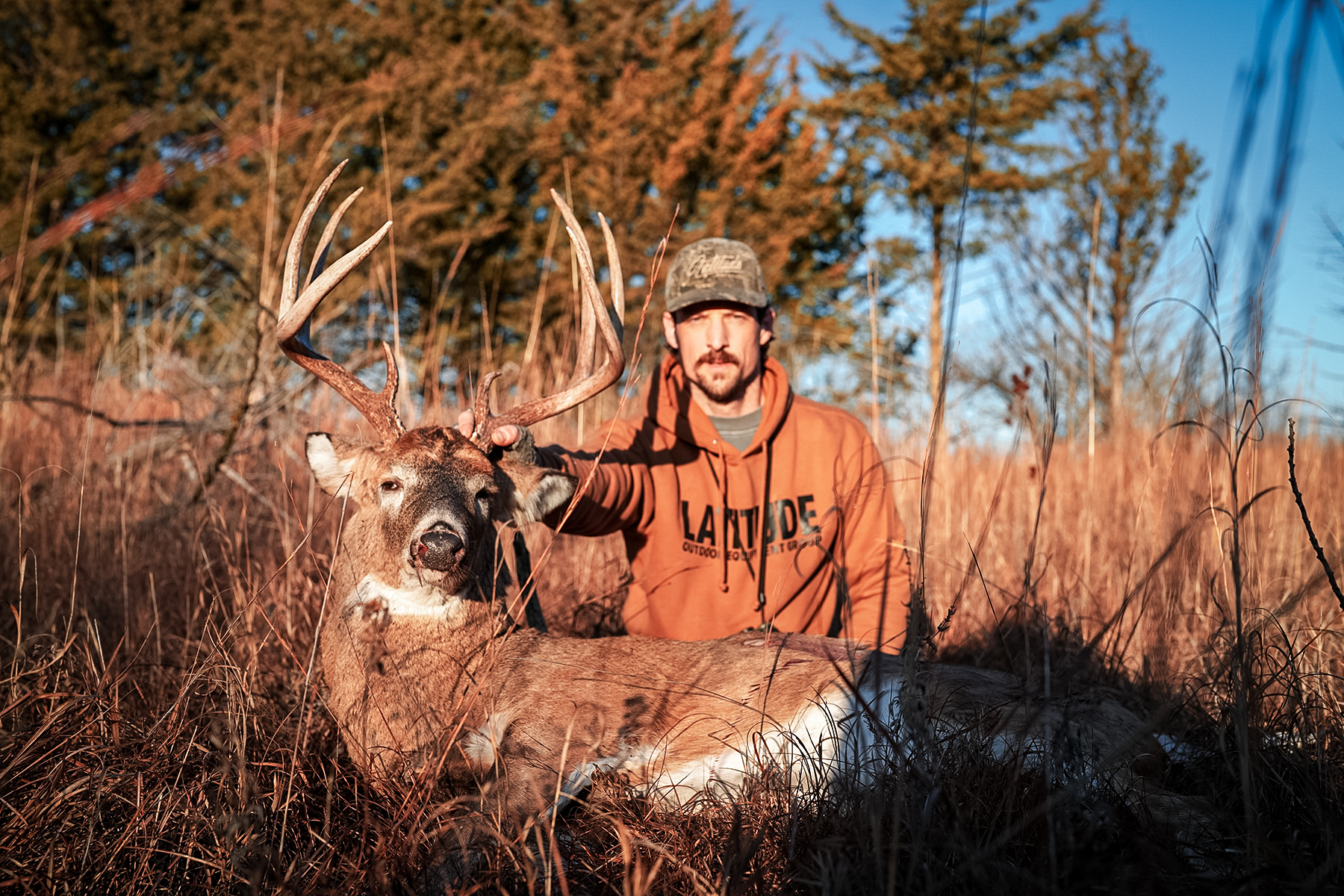
Robert said saddle hunting is shifting from niche to mainstream.
“At first, a lot of people thought it was a gimmick. But then they saw their buddies use it, they tried it themselves, and they realized it really works,” he said. “That’s why you’re seeing such growth.”
Both pros agreed that the reason for the interest and buzz from hunters is simply because it is a hunting method that men and women are seeing the benefits and advantages of, and they also see how it can make them better deer hunters.
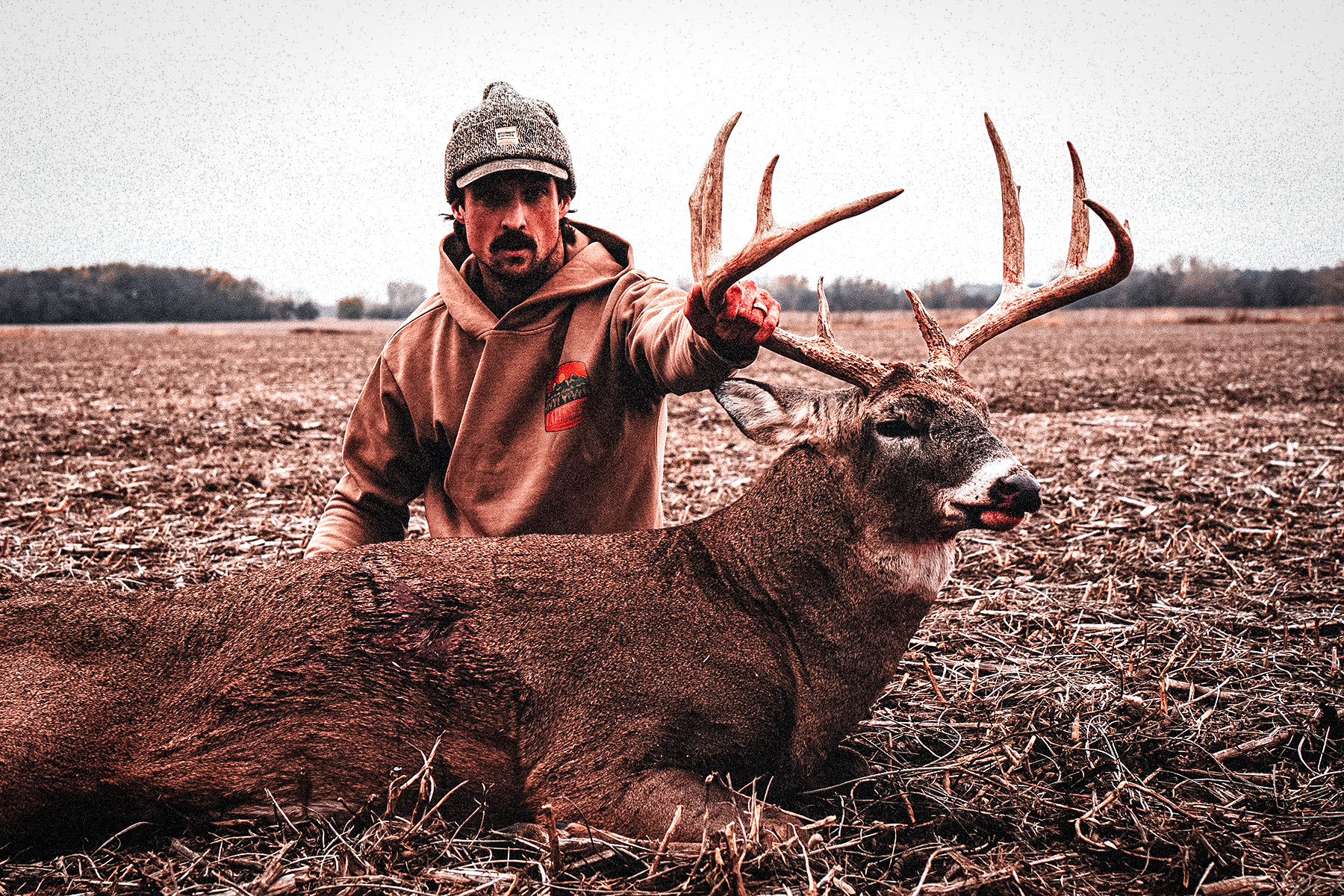
The Big Advantages: Mobility and Versatility
Mobility and versatility: that’s what hunting saddles are all about.
“The biggest advantage is the ability to be light and compact and move around easily,” Chopp said. “I’m hunting a new tree almost every time I go out. A saddle makes that possible.”
Mendoza agreed, noting that being able to set up in nearly any tree, at any height, is a huge benefit.
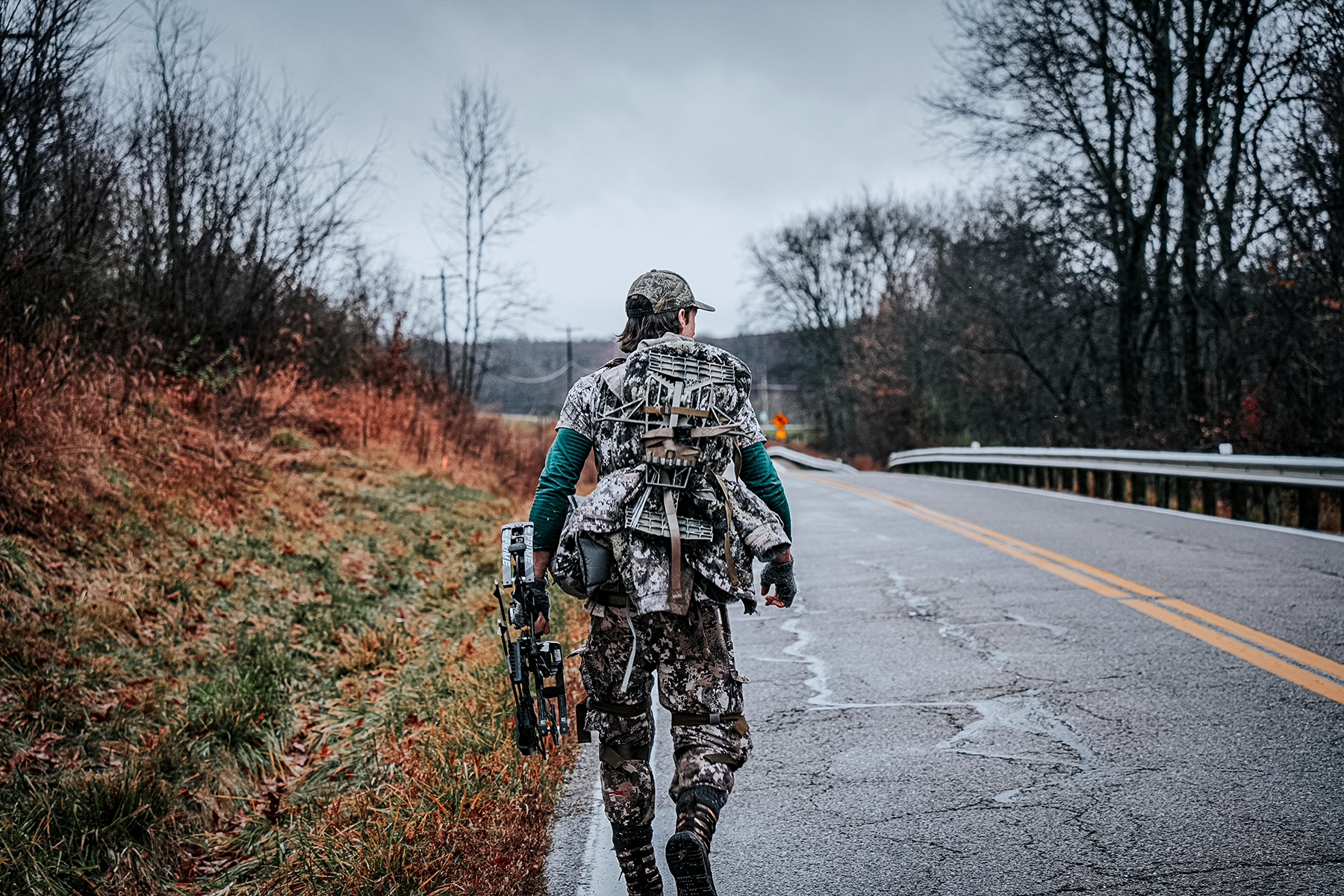
“I seldom hunt more than 10–12 feet off the ground. With a saddle, I can pick a tree with cover, even if it has limbs or isn’t straight. You’re not limited by the tree; you’re hunting where the sign is,” he said.
I wholeheartedly agree. For years, I struggled with scouting an area, hanging a tree stand, and then, once I began hunting, I would sit and wish I were on the opposite side of the field or a little higher up a hill, closer to the sign. Strategies ran through my head, yet I felt stuck in the tree I was in, because that’s where I could hang my stand most easily.
With my saddle, I have hunted in 10-inch trees, 25-inch trees, crooked trees, and multiple species of trees. I hunt in the exact spot I need to be to have the best chance of getting a buck into archery range.
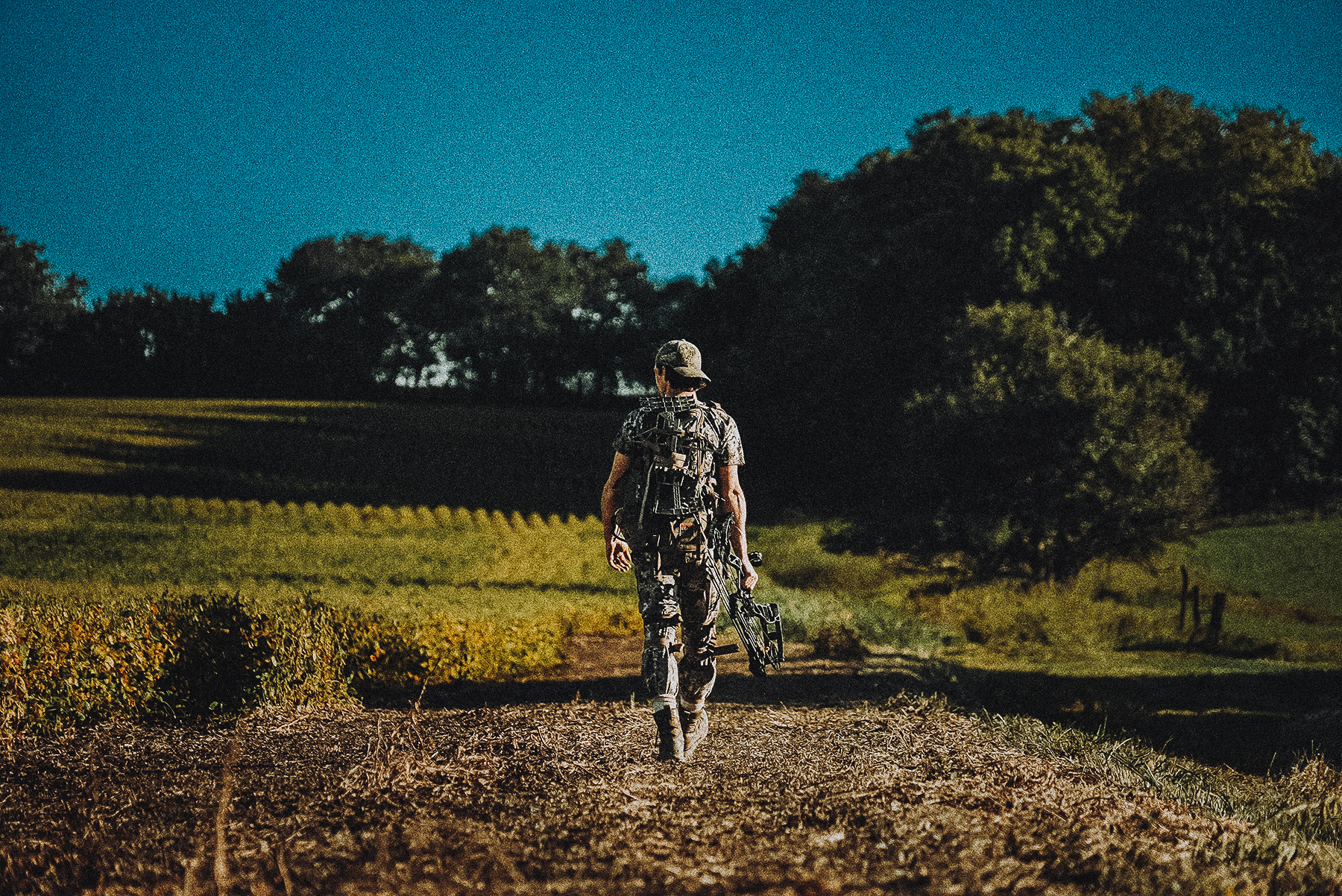
Hunting Saddle Safety
As mentioned earlier, one of the most common questions from curious hunters or newcomers is whether saddles are safe. Chopp explained that, while safety always depends on doing things correctly, being “under tension” at all times eliminates that gut-dropping moment of losing balance in a stand.
Some family friends of mine have a teenage son who is obsessed with getting into saddle hunting to bowhunt whitetails. Recently, to help him become familiar with all the basics of the saddle itself, I invited the young man and his parents to my house for a one-on-one training session.

I quickly found out that, while the young man was most worried about how to kill a deer from a saddle, his mom and dad were more concerned about the safety of his setup. After 30 minutes of hanging out in my backyard (literally), his parents felt confident that his safety was assured by using a lineman belt and Tethrd rope.
Stamina and Weight Savings
Another primary advantages of hunting saddles is their light weight; they’re easier to carry and easier to set up than even the lightest climbing stands.
Chopp compared it to conserving energy for a weeklong rut trip. “If you’re hauling heavy stands, you wear out faster. With a saddle, you save energy and can hunt harder, longer,” he said.
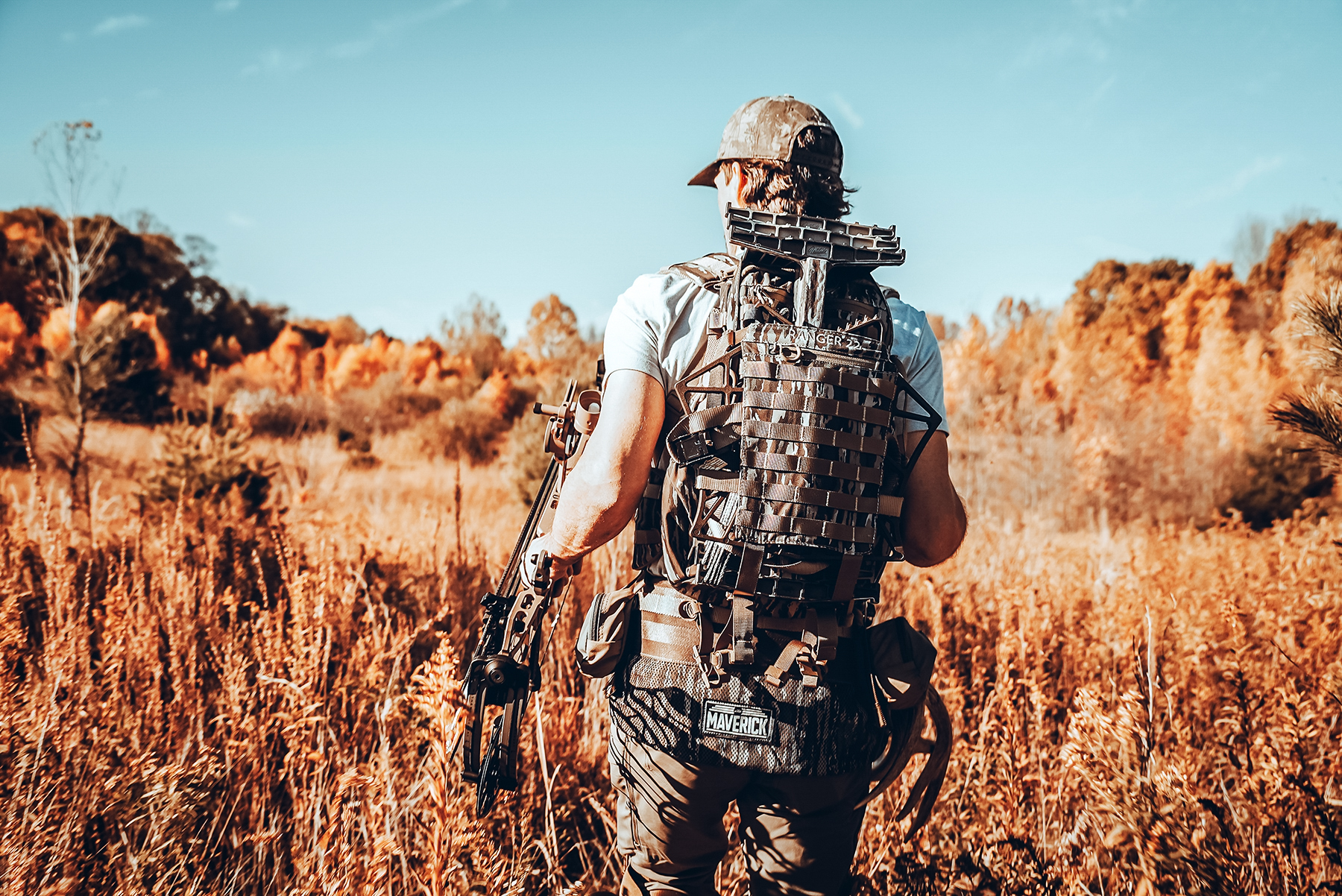
If you doubt this, you should watch Latitude’s popular YouTube series, GRIT, and see Chopp and the others spend the fall traveling and hunting every day, rarely hunting the same tree two days in a row. Alex is constantly refining his strategies to get closer to the deer.
There’s no physical way they could hunt the same way with traditional tree stands; they would be exhausted, and the effort would be more of an inconvenience than an enjoyable experience in the woods.
Hunting Saddles: Getting Set Up
One of the most common beginner questions is, “What do I need to get started?”
This is where, in my opinion, newcomers can make a mistake. Like many hunters, I wanted to get started by spending as little as necessary.
If I didn’t like it, at least I wouldn’t be out a pile of money. Logical, right? Unfortunately, this approach is usually the wrong way to go when it comes to hunting saddle gear, because quality gear can significantly influence how much you succeed and how well you see the many advantages and opportunities saddle hunting offers.

Mendoza recommends Tethrd’s Carnivore 2-Panel Saddle for newcomers, calling it their best blend of comfort and mobility.
“It’s lightweight, like the Phantom, but expands for comfort, like the Ultralock. It’s great whether you’re brand new or a veteran.”
When it comes to climbing sticks, Mendoza pointed me toward the Skeletors as a solid starter option, while the Tethrd One Sticks are better suited for hunters who are counting every ounce in their setup.
He also recommended Latitude’s new Method 3 Saddle, which takes comfort a step further with its two-panel design. The way it’s built helps distribute your weight evenly, allowing you to sit longer without experiencing pressure points or sore spots. Both of these saddles are top-notch and work well whether you’re just getting started or have been at it for years.
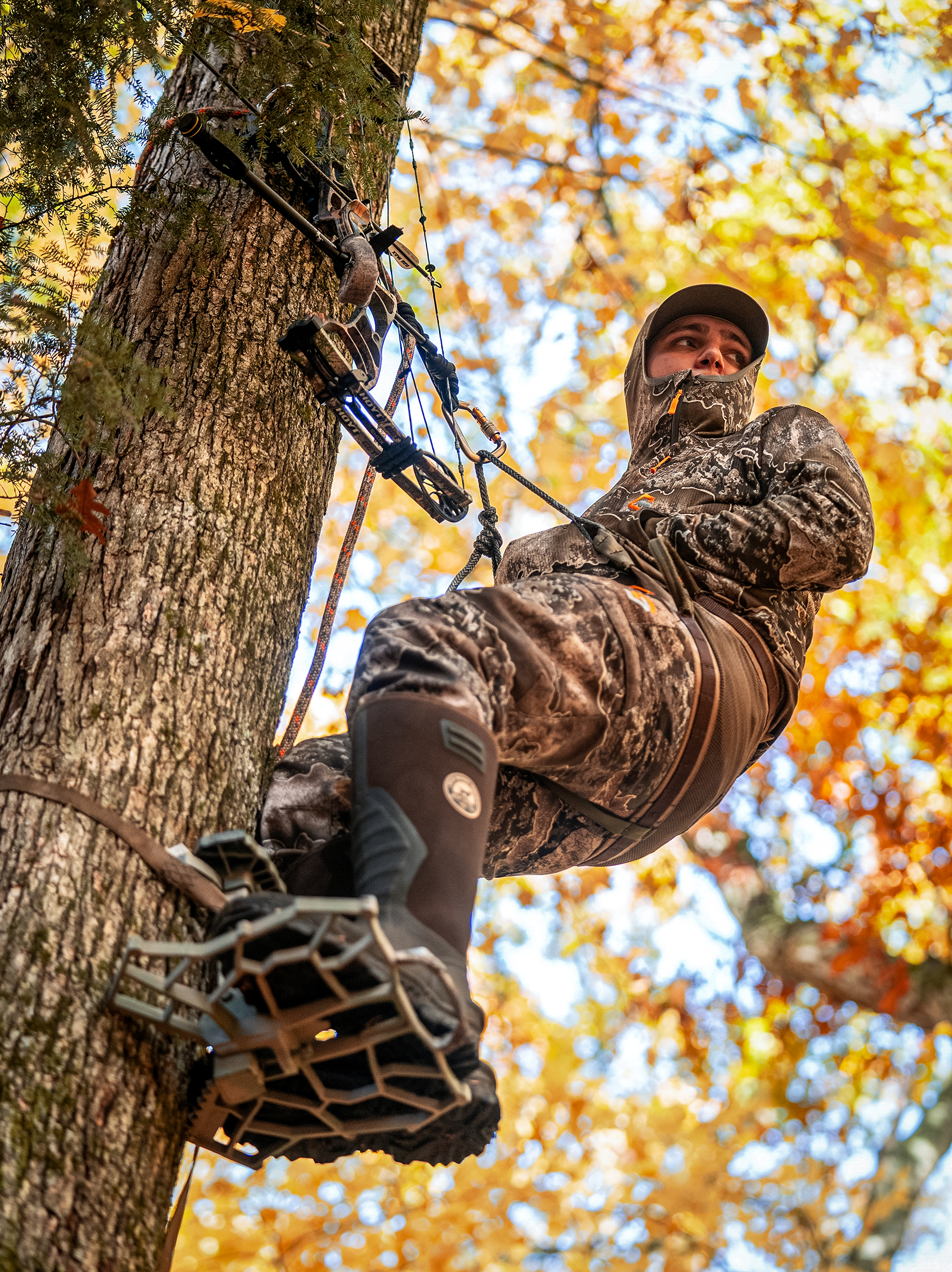
If you’re thinking about jumping in, here are some of the top companies making saddles, platforms, and accessories worth checking out:
- Cruizr
- Eastern Woods Outdoors (EWO)
- Hawk
- H2 Saddles
- Latitude Outdoors
- Lone Wolf Custom Gear
- Out on a Limb Mfg.
- Pursuit Platforms
- Tethrd
- Timber Ninja
- Trophyline
- Wild Edge
Choosing a Tree

For both hunters, tree choice begins with deer sign, not the tree itself. Tracks, scat, and fresh signs guide Alex’s setups, often dictating where he needs to be rather than what tree looks ideal. Seasonal shifts are one factor that guides Robert’s selection, such as feed trees and acorns in early season, scrapes in late October, and funnels near bedding during the rut.
These all help determine where to hunt. Both emphasized that the saddle’s versatility allows you to pick the right spot first and then adapt to whatever tree works.
Bonus Tip for Newbies
Remember, always keep it simple.
“Figure out the five things you really need, do a little homework on each, and build your setup from there,” Chopp said.
“Get some practice in before you head out,” Mendoza said. “Just like with your bow, you want to be confident with your gear before you’re sitting in a tree.”

At the end of the day, the best advice is probably the simplest: quit overthinking it and go hunt. As you use the system, you’ll naturally refine your gear, find your preferences, and discover why so many hunters are making the switch.
Saddle hunting isn’t just some passing trend; it’s a proven way to hunt that gives you more mobility, safety, and flexibility than a lot of other setups. If you’ve been bowhunting a long time and want something lighter, or you’re brand new and chasing your first deer, a saddle can really open doors. As A
“At the end of the day, the saddle lets you move with the deer, not force them to move around you,” Chopp said. “That’s why it works.”
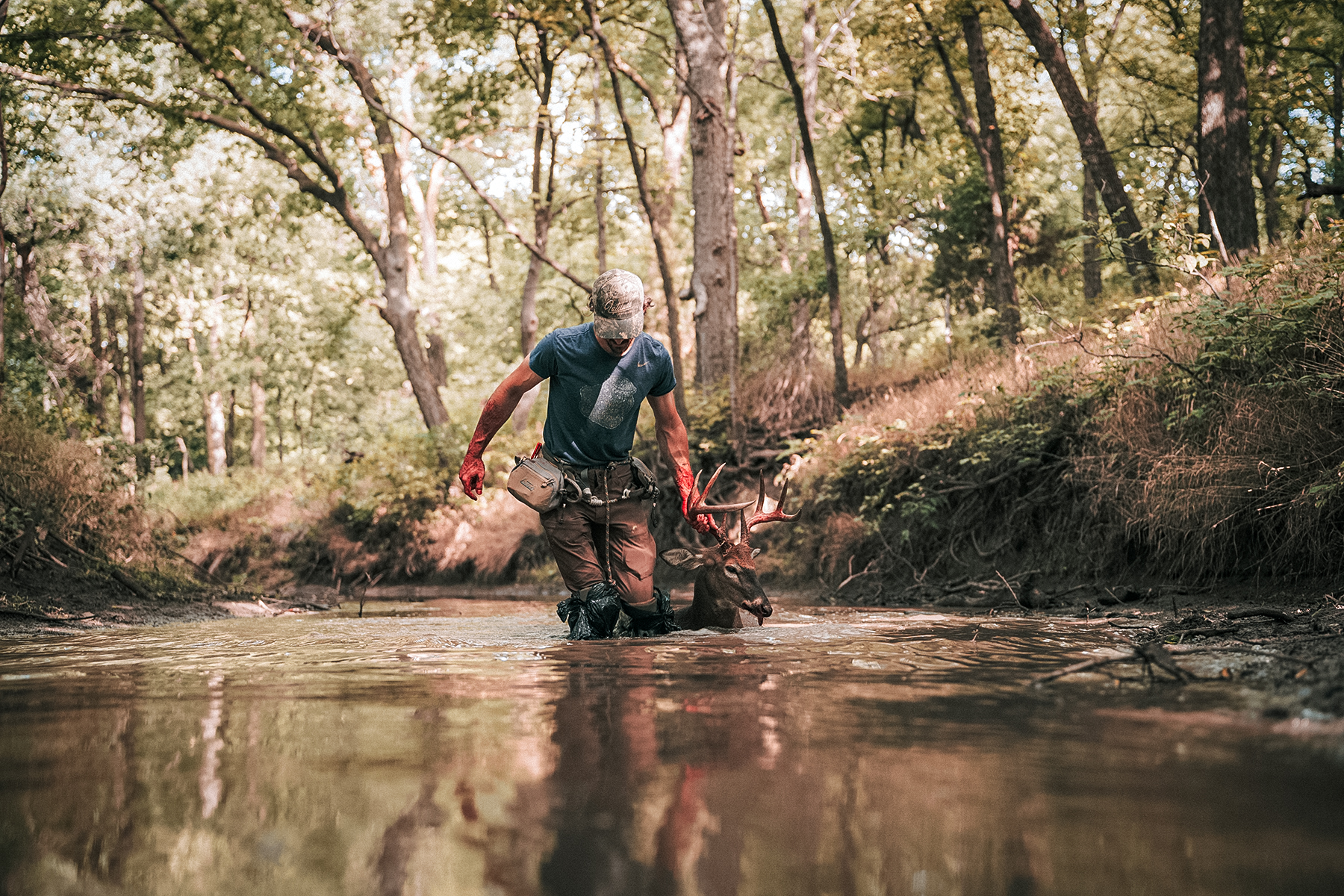
Saddle Hunting Starter Kit
If you’re new to saddle hunting, here are the essentials to get started:
- Saddle – your foundation for comfort and safety.
- Platform – a stable place to stand and shoot.
- Climbing Sticks – your way up the tree.
- Backpack – to carry and organize your setup.
- Crucial Accessories – ropes, pouches, gear strap, bow hanger.
- Knee Pads – key for bracing against the tree and steadying shots.
Pro Tip: Once you’ve got the gear, nothing replaces practice. Climb, shoot, and move until it feels like second nature.

Safety Checklist
Before heading up a tree with your saddle setup, run through this quick safety list ,every time:
- Always wear your lineman’s belt while climbing.
- Inspect the saddle, ropes, carabiners, and platform before each hunt.
- Double-check knots and connections before leaving the ground.
- Keep your tether above head height once at hunting level.
- Carry an emergency plan (cell phone, whistle, and a way to self-rescue).
- Never climb higher than you’re comfortable or trained for.
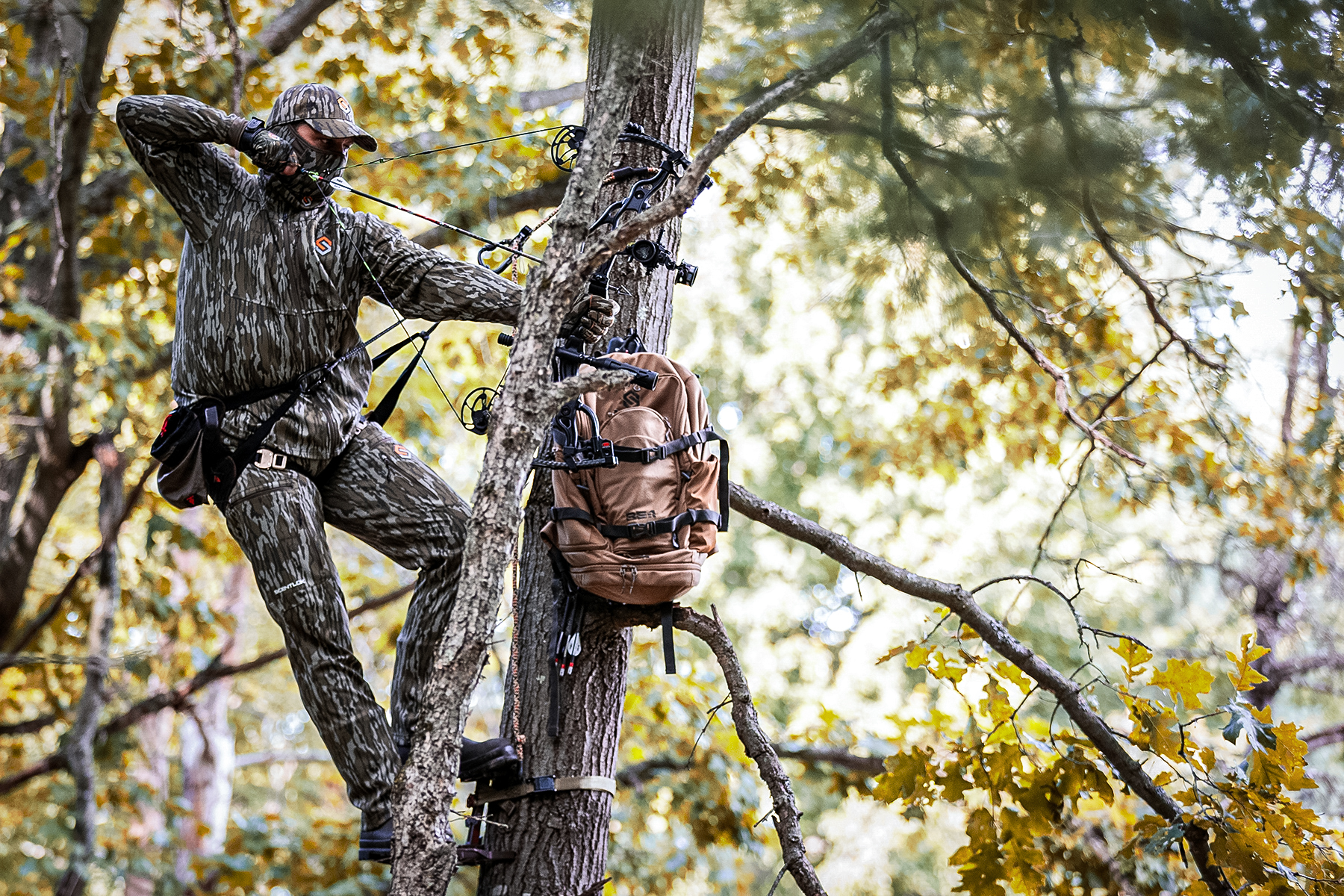
Leave a Reply